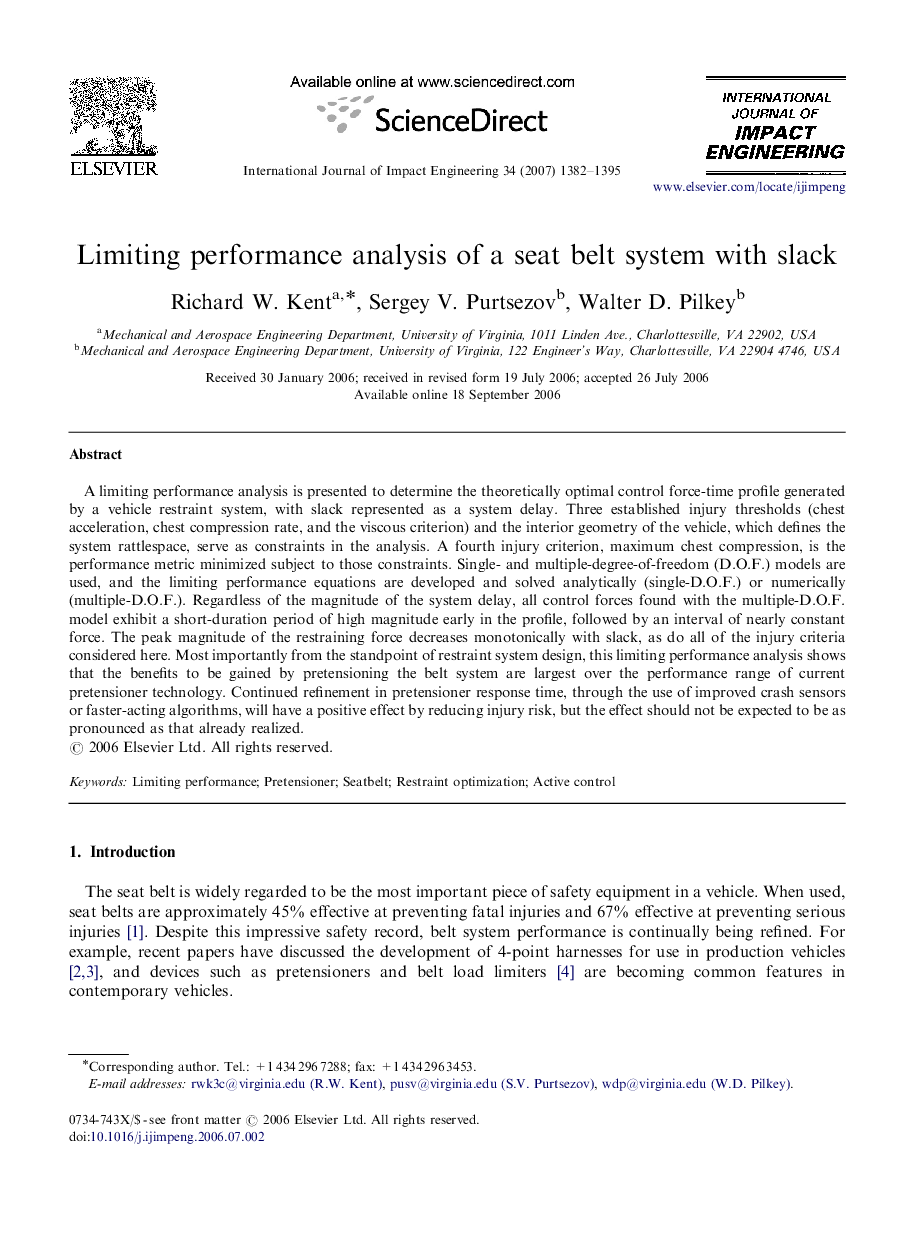| کد مقاله | کد نشریه | سال انتشار | مقاله انگلیسی | نسخه تمام متن |
|---|---|---|---|---|
| 783668 | 1464161 | 2007 | 14 صفحه PDF | دانلود رایگان |

A limiting performance analysis is presented to determine the theoretically optimal control force-time profile generated by a vehicle restraint system, with slack represented as a system delay. Three established injury thresholds (chest acceleration, chest compression rate, and the viscous criterion) and the interior geometry of the vehicle, which defines the system rattlespace, serve as constraints in the analysis. A fourth injury criterion, maximum chest compression, is the performance metric minimized subject to those constraints. Single- and multiple-degree-of-freedom (D.O.F.) models are used, and the limiting performance equations are developed and solved analytically (single-D.O.F.) or numerically (multiple-D.O.F.). Regardless of the magnitude of the system delay, all control forces found with the multiple-D.O.F. model exhibit a short-duration period of high magnitude early in the profile, followed by an interval of nearly constant force. The peak magnitude of the restraining force decreases monotonically with slack, as do all of the injury criteria considered here. Most importantly from the standpoint of restraint system design, this limiting performance analysis shows that the benefits to be gained by pretensioning the belt system are largest over the performance range of current pretensioner technology. Continued refinement in pretensioner response time, through the use of improved crash sensors or faster-acting algorithms, will have a positive effect by reducing injury risk, but the effect should not be expected to be as pronounced as that already realized.
Journal: International Journal of Impact Engineering - Volume 34, Issue 8, August 2007, Pages 1382–1395